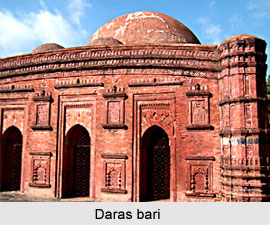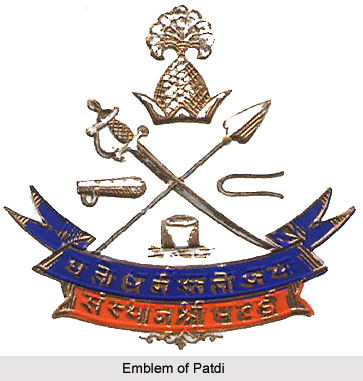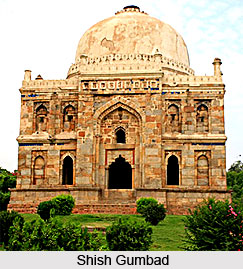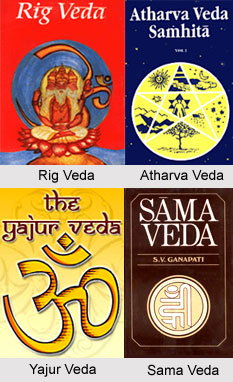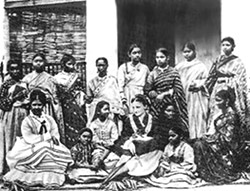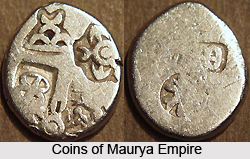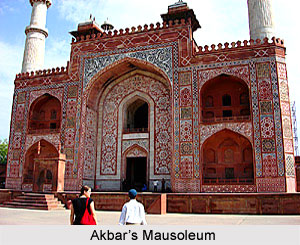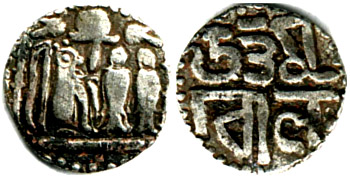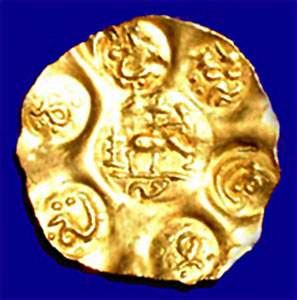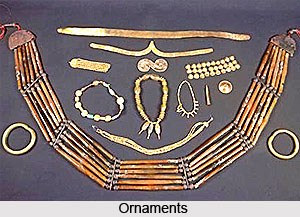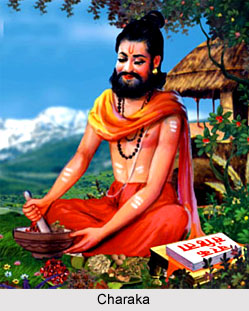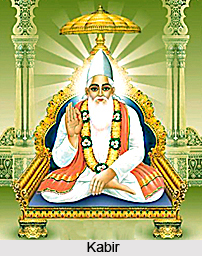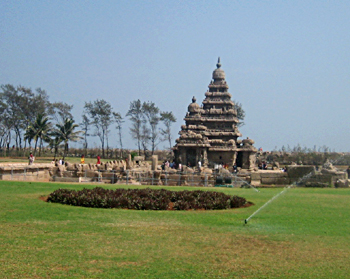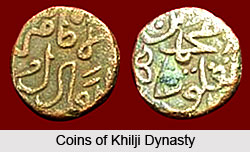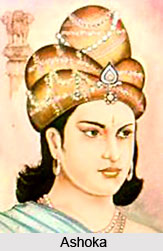 Punjab was one of the most important and eventful regions in British India and was the homeland of a number of socio-religious movements. The socio-religious movements in Punjab were founded with a variety of aims like purifying a particular religion or spreading education among the masses or propagating new ideas or philosophies. Among all the movements, the Nirankaris, the Namdharis and the Singh Sabhas were of prominence and made huge impacts in the society of Punjab.
Punjab was one of the most important and eventful regions in British India and was the homeland of a number of socio-religious movements. The socio-religious movements in Punjab were founded with a variety of aims like purifying a particular religion or spreading education among the masses or propagating new ideas or philosophies. Among all the movements, the Nirankaris, the Namdharis and the Singh Sabhas were of prominence and made huge impacts in the society of Punjab.
The Nirankaris movement was founded by Baba Dayal Das and it was a movement of purification and return. Dayal Das was born into a Malhotra Khatri family in Peshawar and was raised as a pious, religiously oriented boy. During his adulthood, he was not enchanted with the contemporary religion and came into a conclusion that Sikhism was decadent, filled with falsehood, superstition and error. He called for the return of Sikhism to its origin, sometimes during the 1840s and he also emphasised the worship of God as Nirankar (formless). He rejected all kinds of idols, the rituals associated with idolatry and also the Brahman priests who conducted these rituals. He also rejected those Sikhs who were allied with the Brahman priests.
The main focus of the Nirankaris was on deficiencies in religious practice. They did not criticise the theology and according to them, the appropriate path to God was through worship based on meditation rather than complex ritual. They used to meet each morning for daily worship in their Dharmsalas. The Nirankaris also stressed the importance and authority of Guru Nanak and of the Adi Granth (the source of all authority and knowledge). They were urged by Baba Dayal Das `to worship the formless God, to obey the Shabad of the guru (in the Adi Granth) and to clean the shoes and feet of the congregation (as an act of humility)`. They were also asked to serve their parents, to avoid bad habits and to earn their livelihood through work. Dayal Das taught a religious code for the householders, in accordance with Sikh tradition. The Nirankaris were asked not to treat the women as unclean at childbirth; take the dowry at marriages; place neither lighted lamps nor blessed sweets, prasad, placed in rivers; and also not to feed Brahmans as payment for conducting rituals. The Nirankaris actually focused on Guru Nanak, on Sikhism before the establishment of the Khalsa by Guru Gobind Singh at Anandpur and also before the militarisation of the faith. They stressed proper religious practice, issued Hukamnamas to define its concepts of what was correct and also built a series of worship centres staffed by their own priests.
 Founded by Baba Ram Singh, the Namdhari movement was one of the most influential and transitional socio-religious movements in Punjab. Baba Ram Singh was born into a poor carpenter`s family in the village of Bhaini Araiyan in Ludhiana district and received no formal education. After working as a soldier in the army of Ranjit Singh for few years, Ram Singh returned to Bhaini in 1855 and started to attract people with his simple lifestyle and religious ideas. He was greatly influenced by the ideas of Balak Singh and was chosen as the successor of Balak Singh, before his death. Baba Ram Singh formally inaugurated the Namdhari movement in 1857, with a set of rituals modelled after Guru Gobind Singh`s founding of the Khalsa. He used a recitation of Gurbani (hymns from the Granth Sahib), Ardas (the Sikh prayer), a flag and baptism for entry into the new community. The Namdharis were required to wear the five symbols of Sikhism, with the only exception of the Kripan (sword). However, they were required to keep a Lathi (a bamboo stave) with them.
Founded by Baba Ram Singh, the Namdhari movement was one of the most influential and transitional socio-religious movements in Punjab. Baba Ram Singh was born into a poor carpenter`s family in the village of Bhaini Araiyan in Ludhiana district and received no formal education. After working as a soldier in the army of Ranjit Singh for few years, Ram Singh returned to Bhaini in 1855 and started to attract people with his simple lifestyle and religious ideas. He was greatly influenced by the ideas of Balak Singh and was chosen as the successor of Balak Singh, before his death. Baba Ram Singh formally inaugurated the Namdhari movement in 1857, with a set of rituals modelled after Guru Gobind Singh`s founding of the Khalsa. He used a recitation of Gurbani (hymns from the Granth Sahib), Ardas (the Sikh prayer), a flag and baptism for entry into the new community. The Namdharis were required to wear the five symbols of Sikhism, with the only exception of the Kripan (sword). However, they were required to keep a Lathi (a bamboo stave) with them.
The Namdharis abandoned the worship of gods, goddesses, idols, graves, tombs, trees, and snakes and also rejected popular saints along with the rituals conducted by Brahman priests. The authority of the hereditary custodians of the Sikh Gurdwaras (centres of worship) was also rejected by the Namdharis. The Namdharis were told to abstain from `drinking, stealing, adultery, falsehood, slandering, back-biting and cheating` and consumption of beef was strictly forbidden. Protection of cattle was one of the most ardently held values of the Namdharis. The Namdharis considered the women equal to men and initiated them through baptism and allowed them to remarry when widowed. Dowries were rejected by the Namdharis and child marriage was also forbidden. For the men, they laid emphasis on strength and martial qualities drawn from the teachings of Guru Gobind Singh. Many of the Namdharis came from the peasant and untouchable castes and were transformed into a disciplined community. The teachings of Baba Ram Singh and his Guru, Balak Singh did promise a return to purified Sikhism, not of Guru Nanak, but of Guru Gobind Singh. The Namdhari vision of a restructured Sikhism called for a total reshaping of the Sikh community into a militant and religious-political dominion.
The Singh Sabha was another prominent socio-religious movement in Punjab. The first Singh Sabha was founded as a result of a series of events that included the unrest of the Sikh community caused by the Namdharis, the speeches of Shraddha Ram and also the Christian conversions. The first Singh Sabha was founded at Amritsar and held its first meeting on 1st October, 1873. Sir Khem Singh Bedi, Thakur Singh Sandhawalia, Kanwar Bikram Singh of Kapurthala and Giani Gian Singh were some of the prominent people who helped in founding the Singh Sabha. Sandhawalia was the president and Giani Gian Singh was the secretary of the first Singh Sabha. The Singh Sabha was aimed at restoring Sikhism to its past purity and it published historical religious books, magazines and journals to propagate knowledge using Punjabi. The Sabha also urged the Sikh apostates to return to their original faith.
The Singh Sabha used to meet every two weeks, hold anniversary celebrations and special meetings on festival days or in response to specific challenges by other religious groups. It represented the leaders of the Sikh community. The members of the landed gentry, the aristocracy and also various types of temple servants like the Pujaris, the Granthis, the administrators of the Gurdwaras and the descendants of the Gurus joined the Singh Sabha.
As the popularity of the Singh Sabha movement increased, more Sabhas were established in different cities. The Lahore Singh Sabha held its first meeting on 2nd November, 1879 and was led by Professor Gurmukh Singh and Bhai Ditt Singh. This Sabha also worked on achieving similar goals of the Amritsar Singh Sabha and it wanted to return Sikhism to its past purity by eliminating all elements of non-Sikh origin. The Lahore Sabha also expanded with local branches in many of the Punjab towns, very quickly. A General Sabha was established at Amritsar in 1880 to provide a central organisation to all the Singh Sabhas and it was later rechristened as the Khalsa Diwan, Amritsar in April, 1883. The Singh Sabha movement spoke for a rising educated elite and also called for changes in religion. The followers of the movement rejected any fundamental restructuring of authority within the community and realised the need to gain a command of western knowledge if Sikhs were to compete successfully with Hindu and Muslim Punjabis.
The socio-religious movements in Punjab operated with different aims and objectives and they also followed different paths. However, one thing was common in almost all the movements and that is, the movements were intended at ensuring a strong moral character for their followers. The movements also strongly spoke for the equality of women and for eliminating the evil social practices like dowry, child marriage, etc.


